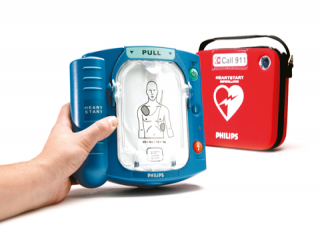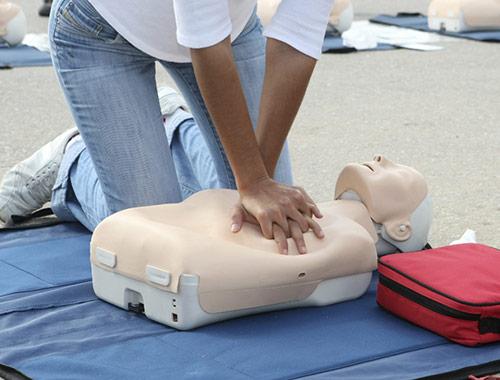
Racial gap seen in response to out-of-hospital cardiac arrests
CPR and defibrillation from bystanders is less likely in neighborhoods with predominantly black residents, leading to worse chance for survivalMedia Contact: Brian Donohue: 206.543.7856, bdonohue@uw.edu
Surviving cardiac arrest often seems like a matter of luck: whether a passerby knows CPR or a defibrillator is close at hand or the ambulance arrives quickly.
One surprising factor also plays a role: The racial makeup of your neighborhood.
Compared with people who live in predominantly white neighborhoods, those living in predominantly black areas are much less likely to receive CPR or defibrillation from a bystander when their heart suddenly stops. And that appears to translate into a worse chance of survival for people in such neighborhoods, according to a study published today in JAMA Cardiology. Its authors are a global team of resuscitation specialists, including three at UW Medicine in Seattle.

“We clearly see that treatments and outcomes for patients with cardiac arrest in predominantly black neighborhoods are worse than those in predominantly white neighborhoods. It actually does not matter if you are black or white within the neighborhood, but the neighborhood matters," said Dr. Graham Nichol, senior author and director of the University of Washington-Harborview Center for Prehospital Emergency Care.
He and colleagues analyzed more than 22,000 cases of cardiac arrest in a non-hospital setting from 2008 to 2011. Study areas included seven U.S. sites (Birmingham, Alabama; Dallas-Fort Worth, Milwaukee, Pittsburgh, Portland, San Diego, and Seattle/King County). Neighborhoods were classified by census tract, based on percentage of black residents: less than 25 percent, 25 to 50 percent, 51 to 75 percent, and more than 75 percent.
Overall, nearly 40 percent of people stricken with cardiac arrest outside of the hospital received bystander CPR. In primarily white neighborhoods, the rate was almost 47 percent, but in predominantly black neighborhoods, the rate was just 18 percent.
"We have known that there are differences in the rates of survival from cardiac arrest between blacks and whites, but it was surprising to see how the demographics of a neighborhood affected outcomes,” said lead author Dr. Monique Starks, a cardiologist at the Duke Clinical Research Institute. “This is absolutely a call to action to improve and expand CPR training and defibrillator access.”

Use of an automated external defibrillator was similarly disproportionate. In mostly white neighborhoods, 4.5 percent of cardiac arrest victims received defibrillation from a bystander, compared with 0.9 percent in mostly black neighborhoods.
Neighborhood makeup was also associated with survival: People with cardiac arrest in mixed- to majority- black neighborhoods had significantly lower adjusted survival rates at hospital discharge, the researchers found. That finding, they said, points to a lack of education about cardiac arrest and CPR in general among people living in black neighborhoods, along with a dearth of defibrillators in public spaces.
“This is something that can be addressed,” Starks said. “Organizations such as the American Heart Association and the American Red Cross, along with medical centers and public health departments, have a unique opportunity to address this issue with dedicated education programs that are particularly tailored for black neighborhoods. This is a relatively low-cost solution that could save lives.”
In addition to Starks and Nichol, study authors include Drs. Peter Kudenchuk and Michael Sayre of UW Medicine, and Robert Schmicker, Eric Peterson, Susanne May, Jason Buick, Ian Drennan, Heather Herren, Jamie Jasti, Dion Stub, Gary Vilke, Shannon Stephens, Anna Chang and Jack Nuttall, on behalf of the Resuscitation Outcomes Consortium investigators. King County Emergency Medical Services helped facilitate the study in the Seattle area.
The study was supported by the Resuscitation Outcomes Consortium, which is funded by the National Institutes of Health and American Heart Association.
For details about UW Medicine, please visit https://uwmedicine.org/about.
Tags:cardiac arrest
